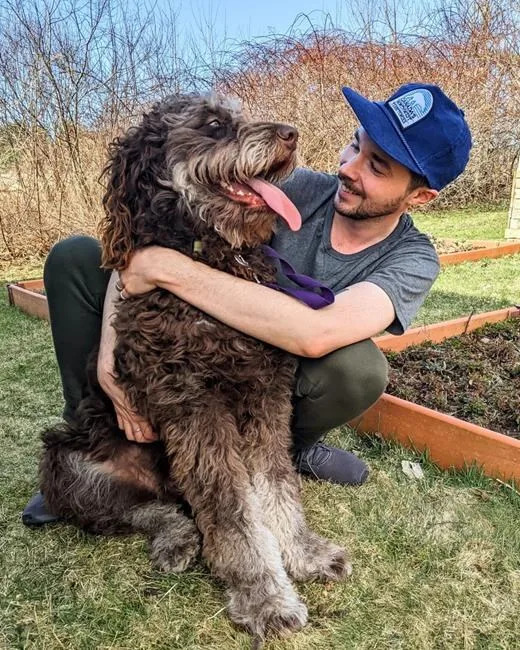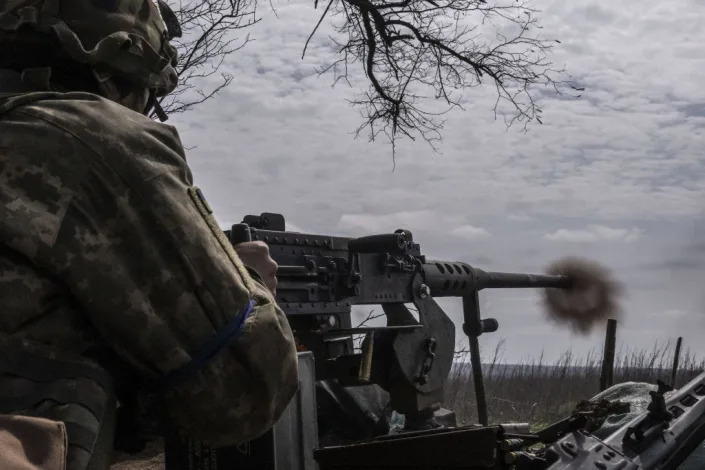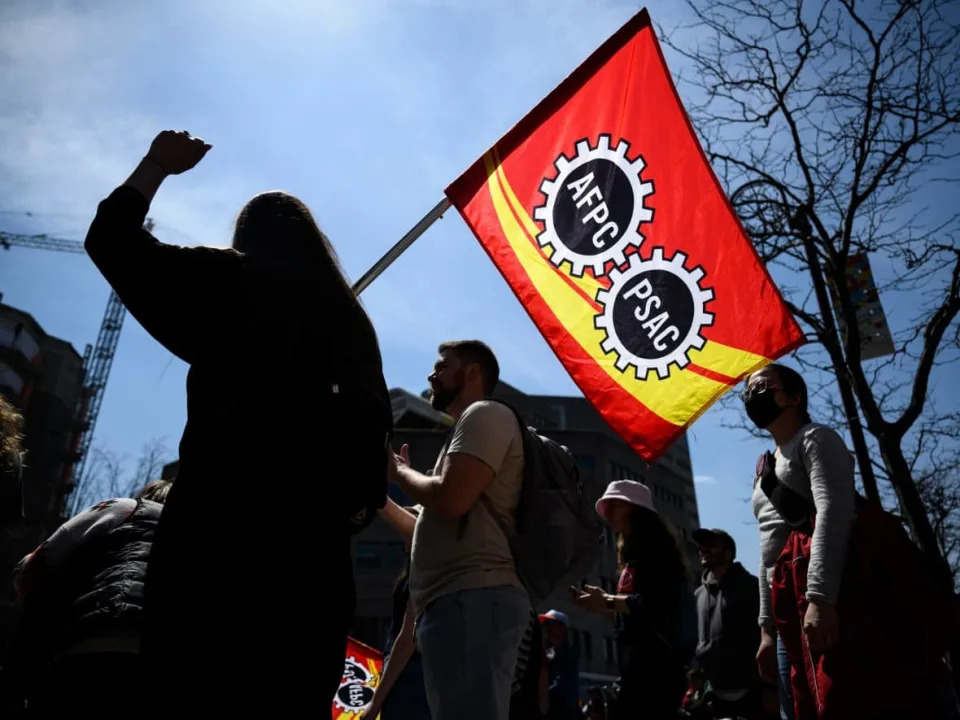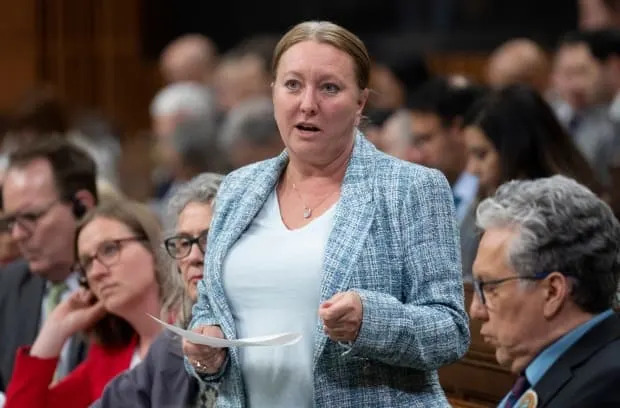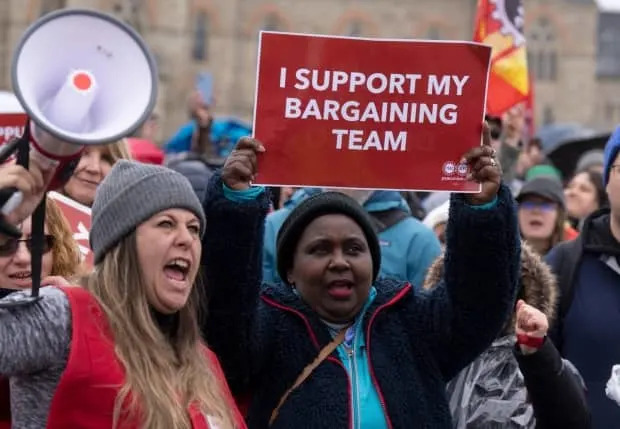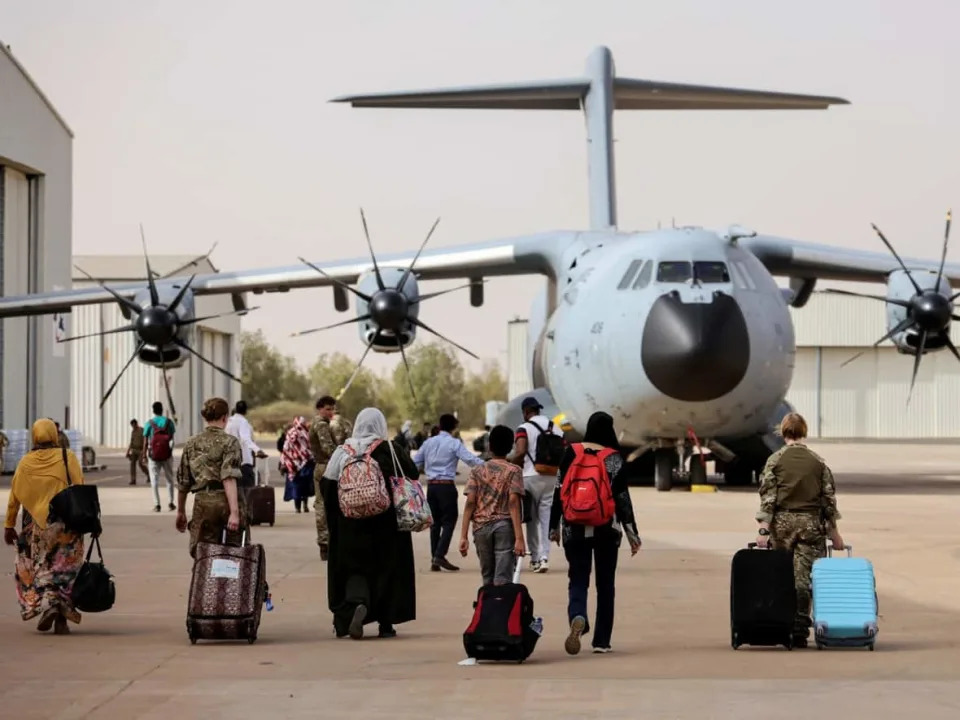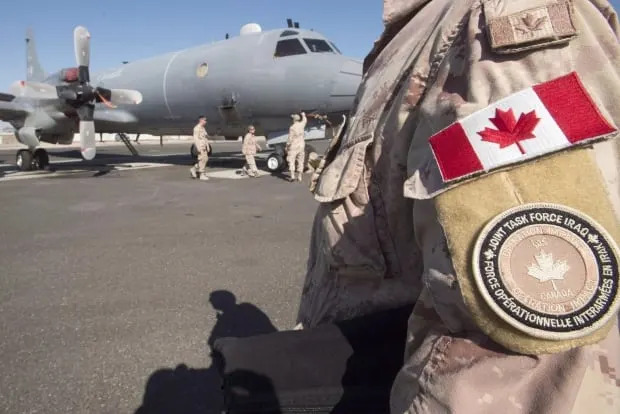LOSERS NO MORE
Maple Leafs win 1st playoff series in 19 years with OT victory over Lightning in Game 6
CBC
Sat, April 29, 2023

Maple Leafs centre John Tavares, left, celebrates with defenceman Luke Schenn after scoring in overtime for a 2-1 win over the Lightning in Game 6 of their first-round series on Saturday night at Amalie Arena in Tampa, Fla. (Chris O'Meara/The Associated Press - image credit)
John Tavares had dreams of suiting up for the Maple Leafs.
When the chance to come home arrived, he couldn't pass up the opportunity to join the team he cheered for as a kid just down the road.
Despite a number of painful moments and plenty of tough questions, a night like Saturday made it all worth it.
Toronto finally exorcised its playoff demons — and is off to the second round of the NHL playoffs.
Tavares scored at 4:36 of overtime and Ilya Samsonov made 31 saves as the Leafs downed the Tampa Bay Lightning 2-1 to win their series 4-2 and advance in the post-season for the first time in nearly two decades.
"Special being a Maple Leaf," said the 32-year-old from Oakville, Ont. "Growing up in the [Greater Toronto Area], you get a sense of the history and tradition and what it means to the city, to the people and how big and how incredible Leafs Nation is.
"To get a big one tonight is really nice, especially with some of the disappointments."
The Leafs captain, who signed with Toronto in 2018 after bolting the New York Islanders in free agency, threw a puck in front that went off Lightning defenceman Darren Raddysh's skate and in for his fourth goal of the series to send Toronto players spilling off the bench in ecstasy.
The emotions ran the gamut for an organization that hasn't tasted playoff success in a generation under an intense microscope.
Getting the 'monkey off the back'
Relief was right up there alongside the jubilation.
"Great feeling when the puck goes in," said Leafs blueliner Morgan Rielly, who scored in OT in Game 3, tied Game 4 late and was in front of Tampa's net on the series clincher. "For it to be Johnny, I think is just extremely special.
"It's a mix of being relieved, being extremely happy, being grateful."
Auston Matthews had the goal in regulation for the Leafs, who lost to Tampa in seven games last spring.
"I've been here seven years," Matthews said. "It's huge mentally for us just to get that monkey off the back."
Steven Stamkos replied for the Lightning, who saw their streak of three straight trips to the Stanley Cup final come to an end. Andrei Vasilevskiy stopped 20 shots.
"We played well enough to win this series," Tampa head coach Jon Cooper said. "Anybody that watched the series would agree with that."
"At some point they were going to get a break," he added of the Leafs. "It sucks it was against us."
'Long time coming'
Toronto last made the NHL's final eight in 2004 — before the league introducing a salary cap, before Twitter was launched, and just over four months after Paul Martin became Canada's 21st prime minister — when they beat the Ottawa Senators in seven games.
Joe Nieuwendyk was the hero that night with two goals on a shaky Patrick Lalime. Toronto would go on to lose a second-round matchup with the Philadelphia Flyers when Jeremy Roenick scored the clinching goal in overtime of Game 6.
The wait for another series triumph in hockey's biggest market would last 6,948 days.
The Leafs have seen 268 skaters, 33 goalies, seven coaches and six general managers pass through the doors since.
"Long time coming," Toronto head coach Sheldon Keefe said. "Long time coming for a lot of players in our room, long time coming for myself, even longer coming for Leafs Nation.
"It's a big night."

Mike Ehrmann/Getty Images
Toronto entered Saturday with 10 straight losses in games where they had a chance to eliminate an opponent dating back to the start of the Matthews-Mitch Marner era, including a 4-2 loss in Game 5 this spring on home ice, in the process of stumbling at the post-season's first hurdle six years running.
"We just kept believing in our group here, didn't listen to anything outside and knew we had the potential to do something special," said Marner, who sported a bloodied lip.
Including a first-round defeat in 2013, Toronto's record in games where it could clinch a series sat at 0-11 before puck drop — the second-longest streak in NHL history.
"You want to keep pushing for more," said Rieilly, a black eye showing the price he paid. "That's great thing about our group — we're looking forward to the challenges that are ahead. We're proud of the effort.
"But ultimately we want to keep playing and we want to keep pushing."
Samsonov comes through in the clutch
Coming off Cup triumphs in 2020 and 2021 before falling in last year's final to the Colorado Avalanche in Game 6 at home, the Lightning tied things 1-1 at 4:11 of the third when Stamkos scored his second on a rebound.
Matthews bagged his series-leading fifth at 13:47 of the middle period for a 1-0 lead when he blasted a one-timer over Vasilevskiy's shoulder.
Samsonov made a big stop on Stamkos early in a spirited first where the Leafs were under siege at times.
"Don't think I can say enough great things about Sammy," Matthews said. "I admire his mindset, his attitude.
"Every single day just comes to the rink and he works his ass off."
Tampa beat Toronto 7-3 in Game 1, but lost Erik Cernak to an illegal check to the head from Michael Bunting on a sequence that kept the minute-crunching defenceman sidelined the rest of the series.
Toronto picked up a 7-2 victory two nights later before securing consecutive overtime wins in Tampa, including a 5-4 decision Monday after trailing 4-1 midway through the third period to build a 3-1 series lead.
The Lightning responded with that 4-2 victory Thursday at Scotiabank Arena to stave off elimination before the Leafs finally sealed the deal Saturday.
"It's been a long road for a lot of our guys," Keefe said. "They've been through a lot of [crap] to get here, to get to this spot. For them to get this feeling tonight, they deserve it.
"Those guys have worked incredibly hard and been through a lot, and have been questioned a lot. It's about time a bounce went our way."
Maple Leafs rewarded for staying the course
Toronto's loss to Tampa in last year's playoffs resigned the organization to that sixth consecutive opening-round exit, and more tough questions about roster makeup, management philosophy and coaching.
The Original Six franchise elected to stay the course with its high-priced core, Keefe and GM Kyle Dubas.
The decision paid off.
The Leafs made the playoffs just once in 11 years following the 2004-05 lockout, with their only appearance ending in a stunning Game 7 collapse against Boston.
Toronto, which already had Marner, Rielly and William Nylander in its system, then bottomed out in 2015-16 for the right to draft Matthews first overall.
The Leafs returned to the playoffs the next spring, falling to Washington in a solid showing from their young roster.
Toronto followed that up with two more seven-game defeats to Boston in 2018 and 2019.
The Leafs were then tripped up inside the NHL's COVID-19 bubble in 2020 by Columbus. Toronto dominated the league's pandemic-necessitated North Division in 2021 before blowing a 3-1 series lead and losing in seven to Montreal for another stunning low point.
The Leafs started to turn a corner by going toe-to-toe with the battle-tested Lighting last year, but lost in a matchup that went the distance despite leading the series 1-0, 2-1 and 3-2, including an OT defeat in Game 6 where they also led Tampa in the third period.
A year later, all that heartbreak is now well and truly in the past.
Oilers overcome Stuart Skinner's blunder to eliminate Kings in Game 6
Kailer Yamamoto scored the game-winning goal late in the third period as the Oilers punched their ticket to the second round of the NHL playoffs.
James O'Brien
·Contributing Writer
The Los Angeles Kings went down fighting against the Edmonton Oilers in Game 6 in a way that paralleled this exciting series overall. Los Angeles didn’t allow setbacks to leave it sagging for too long, rarely leaving Edmonton with a dull moment. Ultimately, the Oilers kept fighting back in their own right, outgunning the Kings 5-4 in Game 6 to notch a 4-2 series win.
Kailer Yamamoto ended up scoring the series-clincher with slightly more than three minutes remaining in Game 6.
With this result, the Oilers will face the Vegas Golden Knights in the two teams’ first-ever playoff meeting. The Golden Knights begin with home-ice advantage, yet with the way the Oilers have performed against the Kings (and down the stretch), plenty of people will pick Edmonton to prevail.
The wrong kind of Mike Smith flashbacks for Stuart Skinner
Here’s a take: for all of the ups and downs during Mike Smith’s time with the Oilers, his overall numbers were often pretty good (sometimes really nice, like a .923 save percentage in 2020-21), particularly considering how affordable his contract was.
It’s human nature to focus on the bigger memories. With Smith, puckhandling misadventures often stick in your mind.
Considering Stuart Skinner’s light NHL resume and similarly-cheap asking price, the unlikely All-Star’s already surpassed expectations. However, it’s tough to focus on that after an epic blunder on the 4-4 goal, when Skinner coughed up the puck and Phillip Danault scored shorthanded midway through the third period.
Although maybe it was just bad luck? Skinner’s stick appeared to break on that dreadful goal:
Luckily for Skinner, Yamamoto bailed him out a few minutes later to take most of the sting out of the gaffe.
Starting to thrive at 5-on-5
Remember when there were mild concerns about Connor McDavid being able to produce at even-strength against the Kings? Those worries have largely dissolved since Oilers coach Jay Woodcroft decided to load up with McDavid and Leon Draisaitl on the same line. Just 1:25 into Game 6, McDavid scored in a slightly unusual way for him: finding space and tipping in a brilliant pass by Evan Bouchard.
Luckily for the Oilers, such even-strength gains haven’t come at the cost of power-play potency. McDavid set up Draisaitl for a power-play marker during a hectic second period, giving Edmonton nine such goals in this series.
Repeating storylines from earlier in the series
While the Oilers’ increased even-strength threat level highlighted one change as this series went along, there were also some narratives that carried over (and sometimes resurfaced).
At times in this series, the Oilers struggled to maintain multi-goal leads versus the Kings. Adrian Kempe factoring into a rally was also a fixture, so maybe it shouldn’t have been surprising that he scored one of two Kings power-play goals to dissolve a 3-1 Oilers lead into a 3-3 tie.
Every now and then, the Kings baited the Oilers into taking extra penalties (or you could argue the Kings were getting favorable calls). That thought was difficult to shake during that frantic second period, as by the time it was 3-3, the Kings received three power-play opportunities (scoring twice) compared to the Oilers going 1-for-1.
In another familiar storyline, the Oilers got some crucial help from players not named Draisaitl or McDavid. In the case of Game 6, Klim Kostin scored two important goals, showing off his powerful release.
Make no mistake, Draisaitl, McDavid and the other top Oilers drove the bus. That said, if Edmonton wants to win a Stanley Cup, it will need other players to pitch in here and there. That’s especially true if the Oilers go top-heavy with Draisaitl and McDavid on the same line more often than not
Report: Ryan Reynolds, Remington Group preparing $1B bid to buy Senators
After finding success in the soccer world, Reynolds is ready to take on ownership in the NHL
·Contributing Writer
Fri, April 28, 2023
A consortium led by Ryan Reynolds is reportedly preparing a huge bid to buy the Senators. (Getty Images)
After his purchase of Welsh soccer team Wrexham AFC in 2020 along with fellow Hollywood star Rob McElhenney, which has resulted in incredible success both on and off the field, Ryan Reynolds looks to be gearing up to try his hand at a hockey team.
The ownership status of the NHL’s Ottawa Senators has been in the news since the passing of former owner Eugene Melnyk in March 2022. According to a report in the Ottawa Sun, a joint bid between Reynolds and real estate mogul Christopher Bratty of the Remington Group are accelerating, with the estimated figure expected to be over $1 billion, a far cry from the $92 million Melnyk paid for the franchise in 2003.
The New York-based Galatioto Sports Partners will be the ones in charge of overseeing the bids, with May 15 set as the deadline. According to the Sun, Reynolds’ consortium is very keen on getting the deal done as soon as possible and has been pushing aggressively throughout the process.
The offer will also reportedly include the building of a new arena closer to Ottawa’s downtown core. The Senators currently play at the Canadian Tire Centre in the suburb of Kanata, roughly 25 kilometers away from downtown Ottawa and has long drawn the ire of Sens fans for being so far away. However, another plan would be developing the 75 acres surrounding the Canadian Tire Centre instead of building an entirely new arena—something the Remington Group specializes in.
Reynolds’ bid is not the only one being considered, however. As many as six major groups have all expressed interest in acquiring the franchise, including a bid featuring Sacramento Kings owner Vivek Ranadivé, according to the report.
Reynolds initially expressed interest in ownership of the Senators in November 2022. He is not the only A-lister to have an eye on Ottawa, though, as actor and former star wrestler Dwayne "The Rock" Johnson threw his name in the ring last month.
